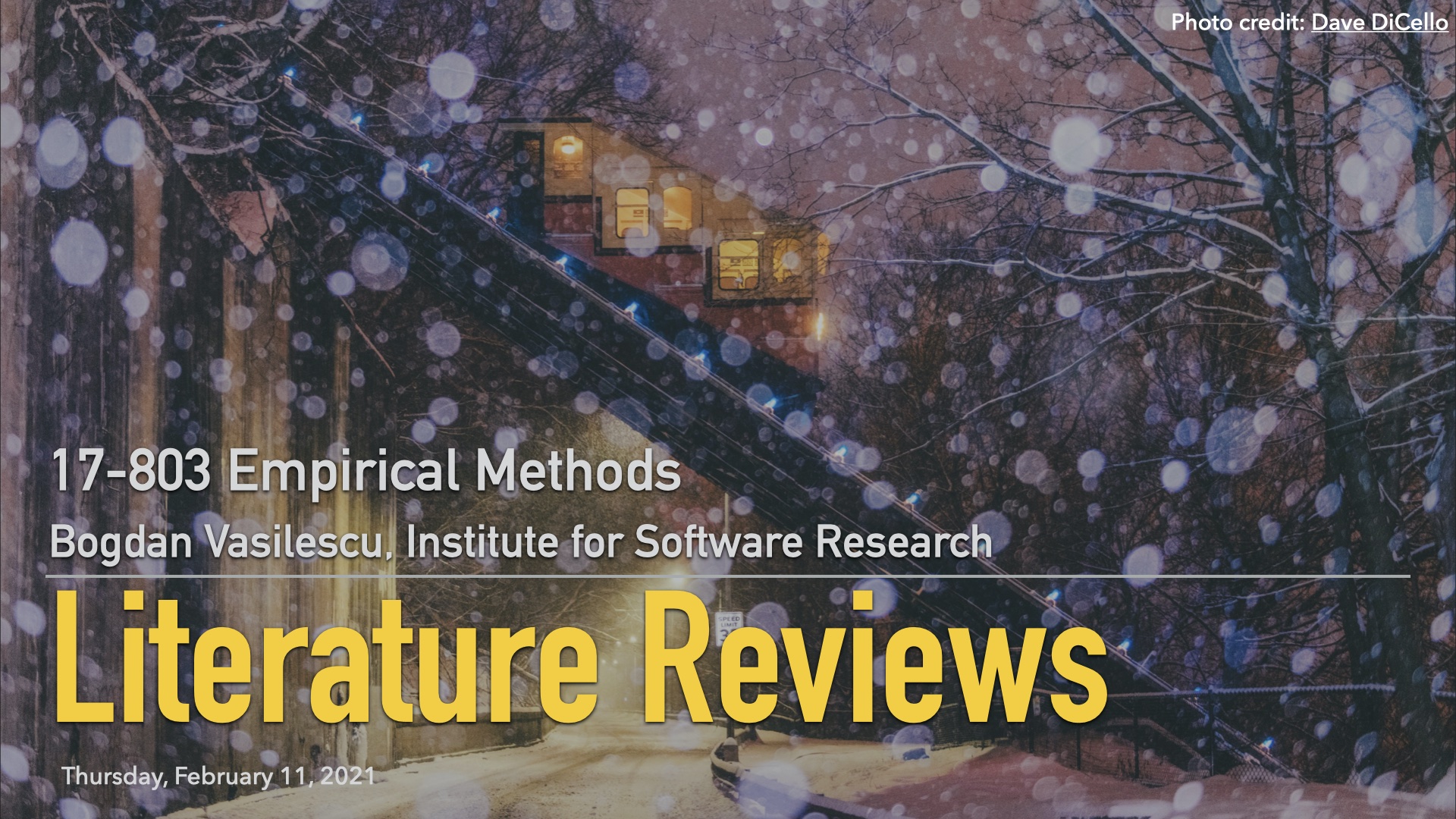empirical-methods
Homepage for 17-803 "Empirical Methods" at Carnegie Mellon University
Project maintained by bvasiles Hosted on GitHub Pages — Theme by mattgraham
L4: Literature Review (pdf, video)
You’re about to start a new research project. Can the problem you’re interested in be studied? It had better be, otherwise you won’t make much progress. But should it be studied? Does it add to the body of knowledge? And who else besides you would care about the results?
Doing a literature review can help you summarize what is known about your topic to identify what remains unknown. It’s the framework (“conceptual framework”) for establishing the importance of your study, it helps relate your study to the literature, helps identify how your study fills in gaps in knowledge, and gives direction for your research questions and hypotheses.
There are three components to a well-done literature review:
- Identify a problem in the world that people are talking about;
- Establish a gap in the current knowledge or thinking about the problem; and
- Articulate a hook that convinces readers that this gap is of consequence.
We disect the literature reviews in two example papers and discuss how each articulates its problem, gap, and hook.
We also discussed some leftover material from last lecture at the beginning of class: an attempt to articulate Stu’s theory; some possible hypotheses derived from the theory; and how this step of making a theory explicit, even for research where the main contribution is a new tool, could make a huge impact on the design of the study and its outcomes.
Lecture Readings
Easterbrook, S., Singer, J., Storey, M. A., & Damian, D. (2008). Selecting empirical methods for software engineering research. In Guide to advanced empirical software engineering (pp. 285-311). Springer, London.
The Stu Dent example is inspired by this chapter. You can find a similar example there, with the corresponding theory Stu should have articulated in that case.
Lingard, L. (2015). Joining a conversation: the problem/gap/hook heuristic. Perspectives on Medical Education, 4(5), 252-253.
Lingard, L. (2018). Writing an effective literature review. Perspectives on Medical Education, 7(2), 133-135.
The problem-gap-hook heuristic for structuring literature reviews.
Justin Zobel, Writing for Computer Science (3rd Edition). Springer, 2015
Good and bad practices for citations.
Chen, J., Nairn, R., Nelson, L., Bernstein, M., & Chi, E. (2010). Short and tweet: experiments on recommending content from information streams. In Proceedings of the SIGCHI Conference on Human Factors in Computing Systems (CHI) (pp. 1185-1194).
Mockus, A., Fielding, R. T., & Herbsleb, J. D. (2002). Two case studies of open source software development: Apache and Mozilla. ACM Transactions on Software Engineering and Methodology (TOSEM), 11(3), 309-346.
The two example papers we disected in class.
